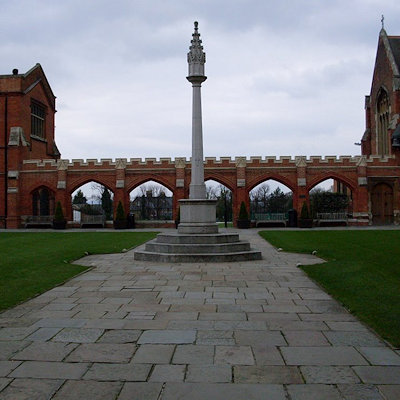
Like us on Facebook
PLACE NAMES


 
|
|
Woodford
|

|
|
|
Woodford appears in the 1086 Domesday Book as Wdefort, although its earliest recorded use is earlier in 1062 as Wudeford. The name is Old English and means 'ford in or by the wood'. The ford refers to a crossing of the River Roding, which was replaced with a bridge by 1238; this led to the renaming of part of the district as Woodford Bridge by 1805. Similarly, part of the district gained the contemporary name of Woodford Green by 1883.
The beginnings of Woodford can be traced to a medieval settlement which developed around the ford. Woodford was never a single village, rather it was a collection of hamlets, and has retained to some extent its portmanteau nature. London has been central to Woodford's development. The easy access to Epping Forest, a large forest near London where members of the royal family traditionally hunted has made it attractive to Londoners since the Fifteenth Century, when wealthy Londoners started to build mansions there. As a consequence, many of the recorded inhabitants would have been servants, and there is even evidence of Africans ('negroes') living in Woodford in the eighteenth century. In fact the domestic servants and wealthy Londoners may have quickly outnumbered the remnant of the local, original rural folk.
An example of the kind of grand house typical of pre-19th century Woodford is Hurst House, also known as 'The Naked Beauty', which stands on Salway Hill, now part of Woodford High Road. Its central block was completed in the early 18th century, and its side wings were added later on in the same century. It was restored in the 1930s, only to be damaged by fire a few years later. The central block was again completely restored, with the minor wings you can still see added on.
Historians have pointed out Woodford's historic roads as evidence of its 'residential nature', as these roads provided reasonably easy access to Woodford, but no further on. There were two roads to Woodford, the 'lower road' (now Chigwell Road) and the 'upper road' (now Woodford New Road). The 'lower road' was often beset by flooding from the Roding, as it still is today, and was continually considered to be in need of repair. In fact one of the illustrious persons to be inconvenienced by the road was King James I. The 'upper road', being less used than the 'lower road' was probably in a worse condition, and the Middlesex and Essex Turnpike Trust undertook its repair and overhaul in 1721, and extended it to Whitechapel. The Trust did such a fine job it was given responsibility for the 'lower road' as well. In 1828, the Trust built the 'Woodford New Road' from Walthamstow to Woodford Wells, and was soon after connected to the newly built Epping New Road.
The beginnings of the actual modern suburbanisation of Woodford, however, can be traced to the opening (in 1856) of the Great Eastern Railway Line from Stratford to Loughton, on which Woodford became accessible by two stations, at Snakes Lane and George Lane. The new convenience of transportation encouraged the growth in number of the daily commuter that is typical of the Woodford resident today. Woodford soon became the residence of the well-to-do city worker, as attested by John Marius Wilson in his Imperial Gazetteer of England and Wales, written between 1870 and 1872.
Woodford doubled its population in the middle and later decades of the 19th century due to the arrival of the railway. A good barometer of Woodford's rapid growth in this period is the erection of three churches in the area, a Congregational, Methodist and Church of All Saints, all built in 1874.
Woodford completed its suburbanisation in the period between the two World Wars of the 20th century. Available land was hungrily built on and the grand houses of the wealthy who had been building them for more than four hundred years were pulled down to make way for the middle class housing estates, typified by the three-to-four bedroom semi-detached house with front and back gardens. In the 1930s, 1,600 houses were being built in Woodford a year on average. The Central line's extension to and past Woodford in the middle of the 20th century, utilising the existing overland train network, solidified Woodford's place in the commuter belt.
|
 Feel free to Email me any additions or corrections Feel free to Email me any additions or corrections
LINKS AVAILABLE TO YOUR SITE
| |





